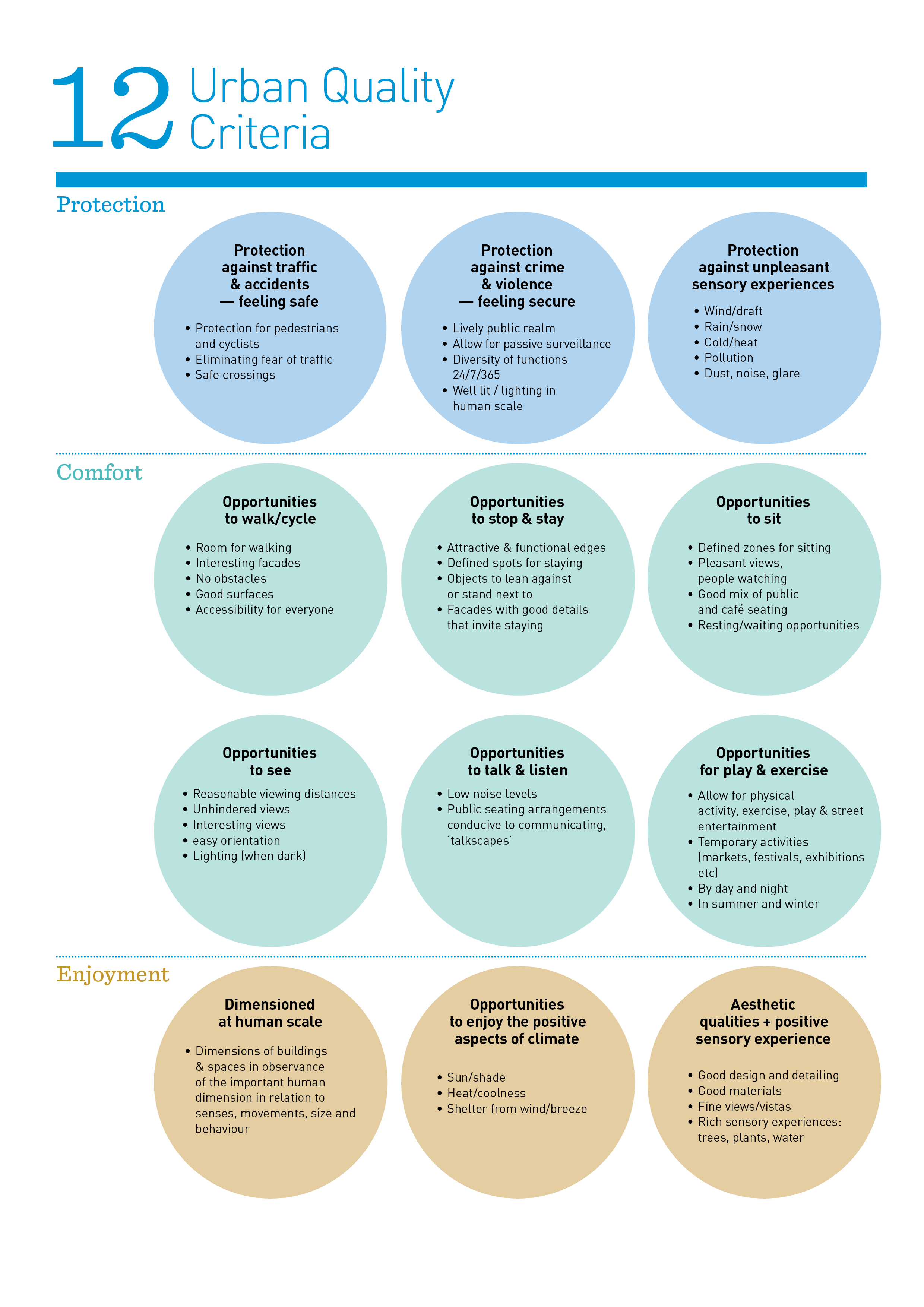
“Cities for people” a term that has been evolved for over 50 years by the great Danish architect Jan Gehl. His concept has inspired a big generation of urban planners to stop planning for vehicles and technology anymore. In his books (cities for people) and life between buildings, he stated how should a city look and how to shape a city the way people actually use. Many attributes have entered the equation of producing a livable city as:
Human-centered not vehicles
For 50 years, we made cities in such a way that people are almost forced to sit down all day in their cars, their offices, or their homes,” “This has led to serious situations health-wise.” Gehl said. He pointed out that cities should stop being designed according to cars and vehicle lanes. Instead the streets should be a net of pedestrian and bike lanes along with public transportation. He also tackled the point of suburban cities where people depend on multiple transportations to go and work their day in the city. They spend almost 20% of their day in the streets, without any kind of enjoyable experience.
Sense and sensibility
“A good city is something built around the human body and the human senses so you can have maximum use of your ability to move and your ability to experience. That is a very important issue. For many years, we have broken all the rules to make automobiles happy. If you want to point to a place where there are people walking, and it’s a great sensation, where the senses can be used extremely well, look at Venice. And if you want the other experience, go to Brasilia.”
At this point, Gehl wanted to focus on the experience of narrow alleys and long canals as in Venice. Nothing developed and giant about these streets, however, they succeeded to be a main attraction for people from around the world. This proofs that it’s not always a happy place of a large wide street with giant buildings where a one can feel so small. Instead, a small narrow city can be the closest to a tourist heart that makes him feel warm and cozy.
Quality of life
Well, quality of life major for Gehl was not only a chapter in a book but it turned into deep research to formulate urban quality of life criteria. This criterion consists of 3 main majors, Protection, Comfort and Enjoyment. Each axis f them branches into small other resident opportunities that can fulfill a full cycle of quality of life. It’s not necessarily that a city should reach all of these goals, however, on the road of having a better quality of life city, these tips are the most important.

Source: gehlpeople.com
Smooth mobility
Gehl has seen that equitable easy transportation is a right for everyone. Actually its part of being comfortable while living in a city is to have multiple alternative solutions to go for each edge in a city. Smooth mobility shall reduce the daily stress of moving around in a city and enhance residents to leave their cars parked for less cost, more sustainable and enjoyable moving solutions.
“In 2009, we saw the peak of driving in the world, and it’s on the way down. The automobile was a good thing in the ‘Wild West’ of Detroit in 1905. It’s not at all the smart mode of transportation for the general population in a city of 10 or 20 million people, like South America, Africa, and Asia. The days of the automobile as something for everyone in the world are definitely over.”
Copenhagen, from where he started.
Copenhagen the city where Gehl is based has launched a program (A metropolis for people ) in the year 2009. This plan called for creating a livable city for residents starting from the urban scale including architecture details and images and ending with the sense of space, safety and affordability.
By the year 2014 Copenhagen was listed first in the list of “The World’s Top 25 Most Livable Cities” according to Monocle magazine for the first time. The city succeeded in creating a pattern that enhances people on walking more, go out more and shop more.
“This becomes good for society, good for the climate, and good for health. They said that if people spend more time in public spaces, the city becomes safer. It becomes more exciting and more interesting. And it furthers social inclusion. This is an important part of having a democratic society: having citizens who can meet each other in the course of their daily doings, and not only seeing different people on television or on screens.” Gehl Said
Now every year Copenhagen hosts countless open-air events that attract people to spend more time together and enhanced their communication. Events as Copenhagen pride, public film shows, football matches in the big squares made a gathering node for everyone in the city.
At the end Copenhagen is a nuclear model that most of the cities should look at and give it a try, the world is not in need of more Plastic cities, instead, people are eager to restore the old-time life pattern and looking forward to more connection. A livable city is a city is where your mind and heart can feel peace to walk through its aisles. That’s where the pathfinders got inspired.

